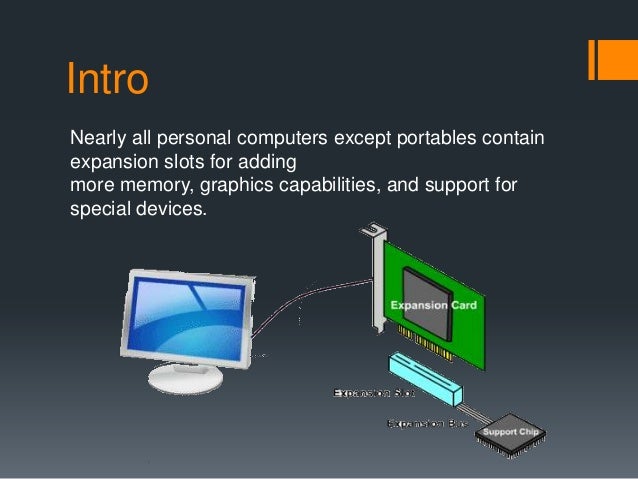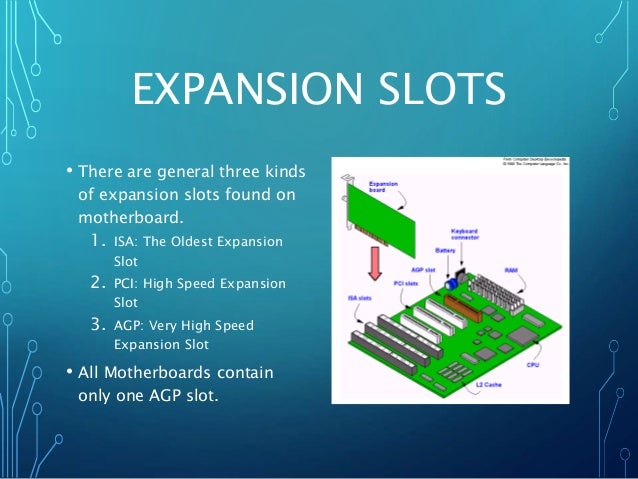Function Of A Expansion Slots
The slots provide connection to the system bus. There are different kinds of slots available, one is PCI (Peripheral Component Interconnect) which is a general expansion slot used in the old time. Notebook and other portable computers have a special type of expansion slot used for installing a PC Card, which is a thin credit card-sized device that adds memory, disk drives, sound, fax/modem, and communications capabilities to a mobile computer. That means that—potentially—any storage or disk drive, GPU or port expansion, or low-power gadget that uses a USB connection, could all be mounted on a card plugged into the M.2 slot at the same time. The reality is a little more complicated—for example, a single M.2 slot only has four PCI Express lanes, a quarter of the total generally.
An expansion card is an electronic circuit board that adds more functionality to a desktop computer. These cards are installed into the expansion slot of a computer motherboard, and they allow the computer to perform additional functions not offered by the motherboard. Video cards and sound cards are common examples: a new video card added will enhance the three dimensional graphics processing power of a computer while a new sound card may improve a computer’s audio input.
There are alternative terms used for this type of card, and it is also known as expansion board, add-on card, interface adapter or an internal card. Generally, between one and seven expansion cards can be installed into the desktop computer system. Laptops do not use standard cards due to their small form factor, although they can often accept a removable PCMCIA card that offers additional functions.

Function Of A Expansion Slots Machine
The Altair 8800, developed in the mid 1970s, was the first microcomputer to add an expansion card bus. In 1981, IBM® launched its first PC with an XT bus, which was later replaced with a 16-bit ISA. The introduction of the PCI bus in 1991 resulted in modern forms of interface adapters that provided additional benefits beyond enhanced graphics and sound.
Most cards are inserted in PCI or “Peripheral Component Interconnect” slots, which are integrated circuits fitted onto the motherboard. One edge of the card holding the contacts or keys is inserted into the slot. This establishes an electrical contact between the motherboard and the card’s integrated circuits.
Function Of A Expansion Slots Machines

The expansion slots on a motherboard provide us with almost unlimited options for customizing our computers. In this video, you’ll learn about the PCI bus, the PCI Express bus, and riser cards. You can extend the functionality of a motherboard by adding adapter cards. The functions of a computer motherboard are as follows. The motherboard also acts as the platform on which various expansion slots are available to install other.

Standard interface adapters, such as graphics cards and sound cards, offer various added functions. Some video cards offer video capture, MPEG 2 and MPEG 4 decoding, a light pen, and the ability to connect to multiple monitors, for example. Sound cards may add functions for composing music, editing audio presentations, and other multimedia applications.
There are some “low-profile” cards that fit in a lower height computer framework. Some are used solely for external connectivity such as modem cards, storage area network (SAN), and network cards, which are commonly referred to as I/O cards or input/output cards. A USB card is mainly used by users who need additional USB or Firewire ports.
Function Of A Expansion Slots
A PC expansion card can only be inserted on computers with available expansion slots. Computers such as the Apple Macintosh® and other all-in-one systems do not accept these cards.